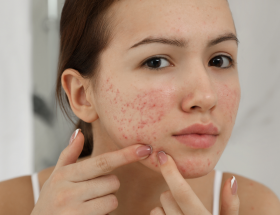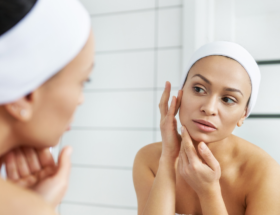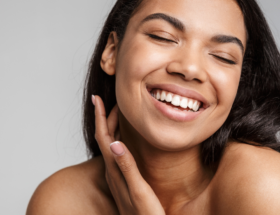Skin lightening, including skin bleaching, is the practice of lightening the skin colour to reduce the appearance of hyperpigmentation, dark spots, or blemishes. While skin bleaching is a common practice among women in Asia, it is also popular among African Americans in the United States, especially celebrities. Unfortunately, the safety of skin-bleaching products and the risk of skin discolouration are not well-understood. Skin bleaching is the practice of lightening one’s skin colour with the use of skin-lightening agents. These agents can be artificial or derived from natural products such as plants.
Skin bleaching benefits
Flawless and Even Skin Tone
Skin bleaching products, also known as whitening creams, are used to lighten dark areas of the skin, such as freckles, age spots, or scars. These products typically work to lighten and brighten the skin, but they can also fade the colour of a person’s skin. Bleaching products work on the principle of oxidation: they remove melanin (the pigment that darkens the skin), which is a natural pigment found in the skin, and cause it to turn white.
Remove or Reduce Dark Spots
For many people, dark spots are a major source of worry. Those spots, which appear on our face, underarm, and back, are caused by a build-up of melanin. Melanin is produced naturally by the body, but some of us produce more excess melanin than others. If your skin is exposed to the sun, the melanin breaks down and darkens your skin, resulting in dark spots. Luckily, numerous over-the-counter skin bleaching products are available to help lighten dark spots.
Hide Acne Scars
If you have acne scars, you may be tempted to try anything to get rid of them, including skin bleaching. Skin bleaching is a method of lightening skin by making it lighter in colour. While skin bleaching can remove the appearance of some acne scars, keep in mind that scars cannot be removed by bleaching.
Here are some side effects to look out for:
Minamata Disease
Minamata disease, also known as Mercury poisoning, is another cause of skin bleaching. Because both skin bleaching and Minamata disease involve the overproduction of melanin, they can be confused. More cases of Minamata disease are being reported today, and cases of skin bleaching have been reported throughout history.
Kidney Disorder
Kidney disorder, also known as Nephrotic syndrome, is a medical condition that occurs when too much protein is filtered by your kidneys. The kidneys filter waste out of the blood, but in nephrotic syndrome, the kidneys fail to filter out enough protein, making the blood appear thicker than normal. The excess protein messes with the balance of fluids in your body, causing swelling in your feet, legs, and face.
Exogenous ochronosis
Exogenous ochronosis is a rare but severe condition in which victims develop yellow or brown stains on their skin and lips. Any dark mole or skin lesion that suddenly changes colour can develop ochronosis. If ochronosis is left untreated, it can cause scarring or disfigurement. There are cases of ochronosis affecting the whole body, but most often, the condition is limited to the affected skin and lips.
Perioral Dermatitis
Perioral dermatitis, or skin inflammation, can lead to itchy red patches or scaly patches. It can be mild or severe. Various factors cause it, but the most common causes of perioral dermatitis happen to be sun damage or physical irritation. A mild case of dermatitis may only require over-the-counter treatment, but severe cases may warrant a trip to the doctor.
Steroid Acne
Steroid acne, or acne caused by applying a topical steroid to the skin, is an unfortunate side effect of steroid use-particularly after Accutane treatment. Acne caused by topical steroids is usually characterized by red, inflamed skin with red-purple or pink bumps.
Things to remember
Skin bleaching products have a reputation for being dangerous, but when used correctly, they can deliver effective safe results. There are a lot of different skin-bleaching products available, including facial creams, lotions, gels, and ointments. But it’s important to look at every option carefully before using any of them.
The effects of bleaching would, however, depend on your skin type and sensitivity. There are many risks involved in skin bleaching, so you could opt for alternatives if you aren’t as confident about bleaching your skin. The use of a microdermabrasion machine, for instance, can be a much safer option. There are hardly any harmful effects involved and it could rejuvenate your skin, and remove scars, ageing spots, blemishes and more.
But the decision to select skin bleaching treatment should rest on you, so it would be advisable that you have a professional go about the procedure with the use of quality products if that is what you want to opt for.
Proper use of skin bleach
While skin bleaching has been a popular beauty regimen for centuries, many skin-bleaching products in the beauty aisle today contain hydroquinone. This skin-bleaching agent interacts with the skin by speeding up the turnover of skin cells. The skin is not replaced at the same rate, leaving dark spots behind. Our skin contains melanocytes, which are what produce melanin, a pigment that gives our skin its colour. As a person with darker skin, you may have more melanocytes than people with lighter skin, causing them to appear darker. However, overexposure to the sun or indoor tanning increases the amount of melanin in the skin, causing hyperpigmentation and making your skin appear darker.










